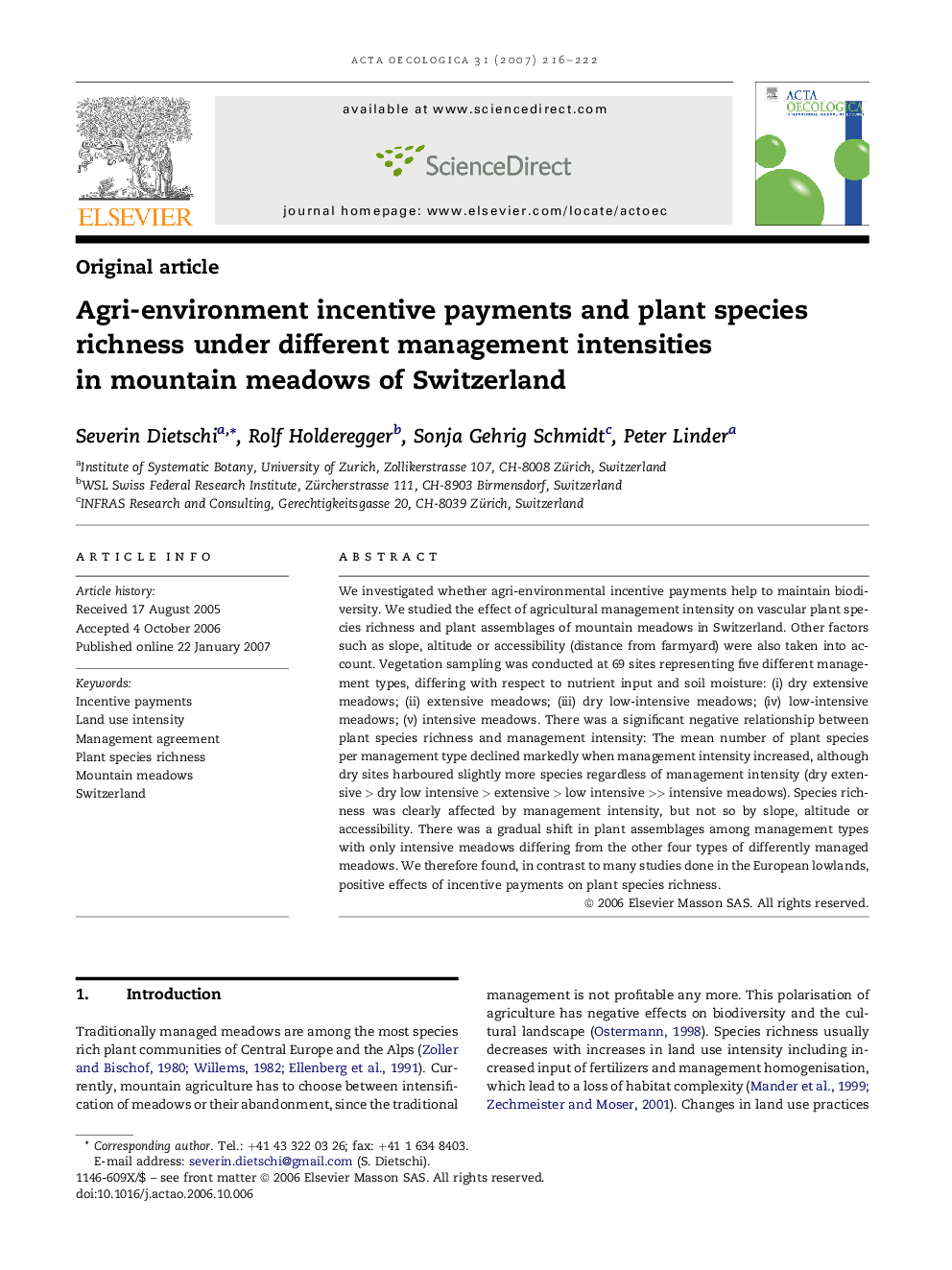| Article ID | Journal | Published Year | Pages | File Type |
|---|---|---|---|---|
| 4381592 | Acta Oecologica | 2007 | 7 Pages |
We investigated whether agri-environmental incentive payments help to maintain biodiversity. We studied the effect of agricultural management intensity on vascular plant species richness and plant assemblages of mountain meadows in Switzerland. Other factors such as slope, altitude or accessibility (distance from farmyard) were also taken into account. Vegetation sampling was conducted at 69 sites representing five different management types, differing with respect to nutrient input and soil moisture: (i) dry extensive meadows; (ii) extensive meadows; (iii) dry low-intensive meadows; (iv) low-intensive meadows; (v) intensive meadows. There was a significant negative relationship between plant species richness and management intensity: The mean number of plant species per management type declined markedly when management intensity increased, although dry sites harboured slightly more species regardless of management intensity (dry extensive > dry low intensive > extensive > low intensive >> intensive meadows). Species richness was clearly affected by management intensity, but not so by slope, altitude or accessibility. There was a gradual shift in plant assemblages among management types with only intensive meadows differing from the other four types of differently managed meadows. We therefore found, in contrast to many studies done in the European lowlands, positive effects of incentive payments on plant species richness.
